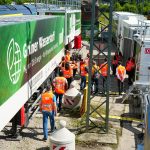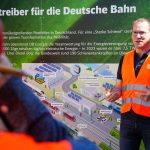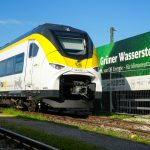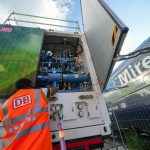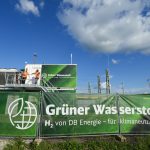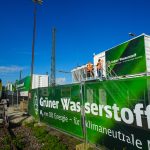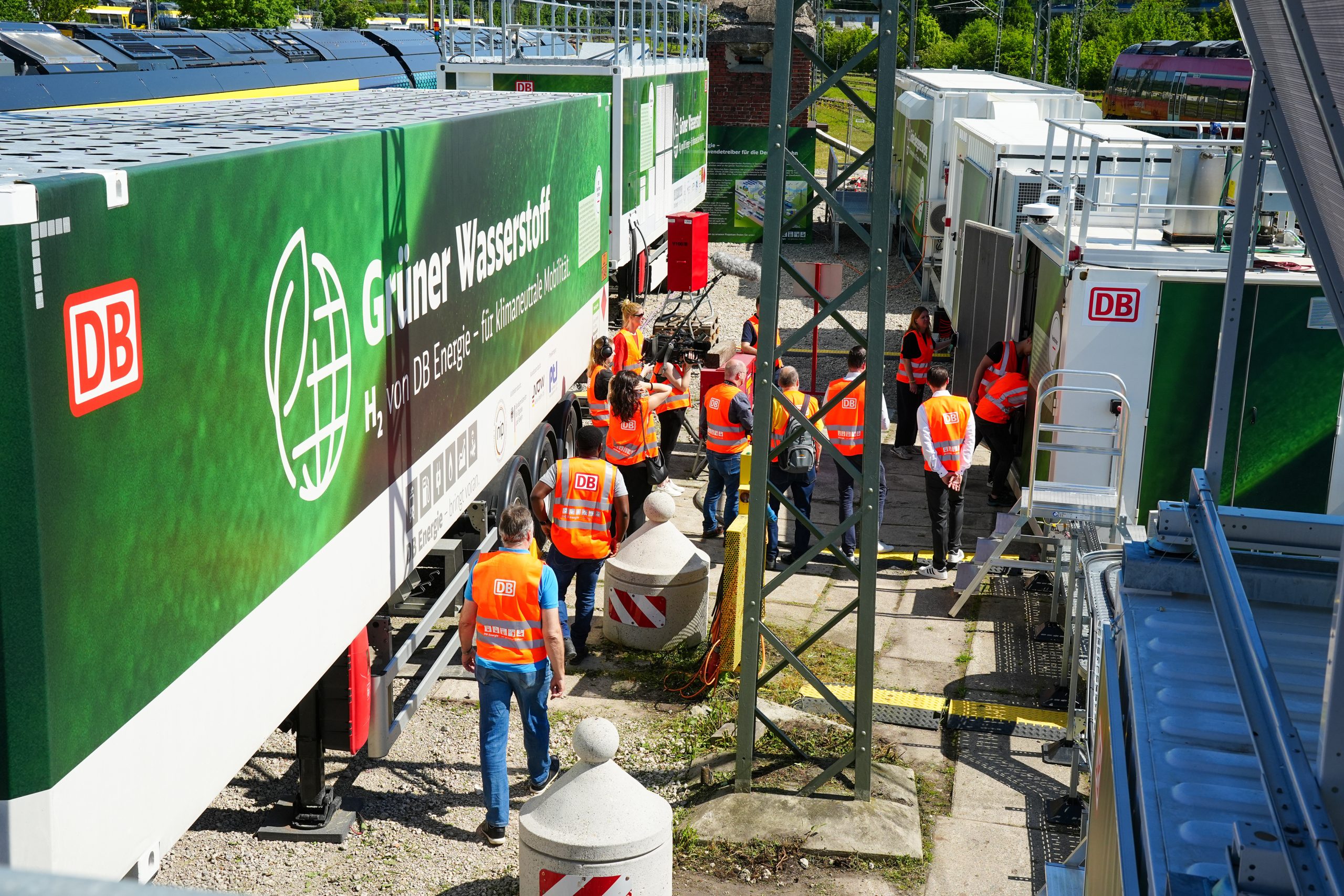 The DB subsidiary, DB Energie, has put into operation the Tübingen innovation hub where the company is testing new technologies for sustainable energy supply for rail.
The DB subsidiary, DB Energie, has put into operation the Tübingen innovation hub where the company is testing new technologies for sustainable energy supply for rail.
The focus is on a new technical interface to the overhead line, which in the future will enable, among other things, the direct feeding of renewable energy into the traction power network. The aim is to test green energy supply solutions for the traction power supply of the future, which will fundamentally change with the feed-in of renewable energies.
The system at the Tübingen site consists of six different components. At the centre is a so-called sector coupler, which the DB helped develop for this project. It forms the interface to the overhead line and connects it to a hydrogen production system and a battery storage system. The sector coupler is already being used in Tübingen in a project in which the DB is producing green hydrogen for the first time to supply hydrogen trains.
“DB Energie is actively tackling the energy transition of the railways. Today we are planning what climate-neutral mobility of the future will look like and how we will prepare the traction power network for the further expansion of renewables. At the Tübingen innovation hub we are testing the use of innovative technologies. (…) Trains must be able to run even when the sun isn’t shining and the wind isn’t blowing,” Andreas Hoffknecht, Managing Director for Technology at DB Energie said.
In comparison to large converter and converter stations that feed from the upstream 50 Hz network into the 16.7 Hz traction power network, sector couplers can feed locally generated green electricity, for example from wind or solar power plants, directly into the overhead line. This saves capacity in the network because the electricity is fed where it is used and does not have to be transported over long distances. In addition, sector couplers can be used in the future as an interface between overhead lines and storage technologies such as battery or hydrogen storage. Stored green electricity can then be fed into the traction power network as needed. This means that DB Energie can react flexibly to network fluctuations as renewables continue to be expanded. In Tübingen, DB Energie uses an innovative second life battery storage system from the DB-internal start-up encore which consists of 108 recycled batteries from electric vehicles.
DB is reusing lithium-ion batteries taking batteries from manufacturers and authorised dealers of e-vehicles and use them to produce modular second life battery energy storage systems. Batteries whose performance is no longer sufficient for a second life are sorted out and passed on for professional recycling. The second life of a battery not only improves the CO2e footprint of electric mobility, but it also supports the decarbonisation of energy by providing sustainable battery energy storage systems, which are particularly needed in times of volatile renewable energy.
Deutsche Bahn is a pioneer in climate protection and will be climate neutral by 2040. The share of renewable energies in the DB traction current mix is already 68%. By 2038, the entire DB traction power will be 100% green, with an interim goal for 2030 when the percentage will reach 80. Since 2018, DB’s long-distance passengers have been travelling on ICE, IC and EC trains within Germany using 100% green electricity.
DB Energie manages the 8,000 km long traction power network and supplies around 20,000 trains with electrical energy every day.
The project is part of the DB’s Strong Rail strategy as well as H2goesRail joint project implemented in partnership with Siemens Mobility. In September 2022, the two companies took the first ride in the Mireo Plus H and tested the train’s refueling procedure using the mobile hydrogen fueling station. A key procedure for competitive hydrogen technology is a fast-refuelling process. DB developed the new method that enables a hydrogen train to be refuelled as fast as a diesel-powered train and in addition, the hydrogen for the trains is produced by DB Energy in Tübingen with green electricity taken directly from the overhead power line.
Share on:



